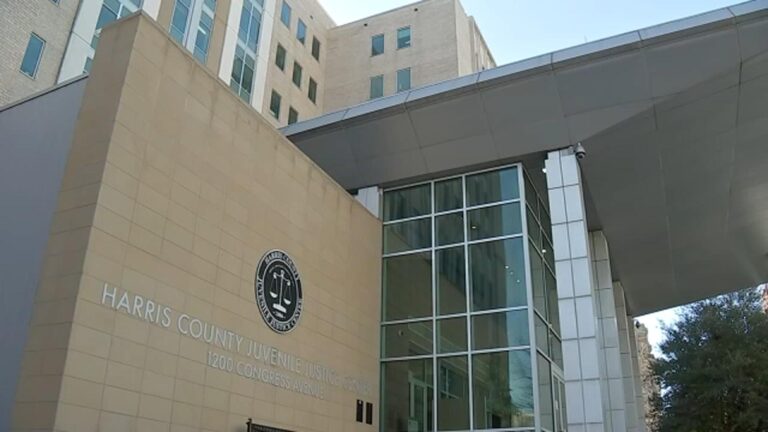Rising Teen Violence in Texas and Houston Raises Urgent Concerns
Authorities in Texas, with a particular focus on Houston, are increasingly alarmed by a notable escalation in violent offenses committed by teenagers. Recent statistics reveal a significant uptick in youth-involved crimes, including assaults, robberies, and drive-by shootings, predominantly affecting adolescents aged 13 to 19. Experts link this surge to intertwined factors such as economic challenges, social unrest, and a resurgence in gang-related activities.
In response, law enforcement and community organizations have intensified their collaborative efforts, implementing a range of strategies aimed at prevention and early intervention. Key initiatives include:
- Broadening mentorship and youth engagement programs
- Boosting police visibility in neighborhoods identified as high-risk
- Strengthening cooperation with educational institutions to spot vulnerable teens
- Targeted crackdowns on gang influence and recruitment
| Crime Category | Increase from 2022 to 2023 | Most Affected Age Range |
|---|---|---|
| Weapon-related Assaults | 35% | 16-19 years |
| Robberies | 28% | 14-18 years |
| Drive-by Shootings | 42% | 15-19 years |
Understanding the Factors Driving Teen Violence
Specialists highlight a multifaceted set of underlying causes contributing to the rise in violent behavior among teenagers. Economic instability in certain urban areas has intensified feelings of marginalization, making youths more susceptible to harmful influences. The proliferation of gangs, often fueled by territorial conflicts and aggressive recruitment tactics, further exacerbates the problem. Additionally, many schools are grappling with budget cuts that limit access to counseling, extracurricular activities, and other supportive services that could otherwise provide positive outlets for young people.
- Family Instability: Increased prevalence of single-parent homes and domestic challenges.
- Community Resource Deficits: Scarcity of social programs and recreational spaces in vulnerable neighborhoods.
- Peer Pressure: Heightened influence to adopt aggressive or delinquent behaviors within social circles.
| Contributing Factor | Effect on Youth | Associated Element |
|---|---|---|
| Joblessness | Increased frustration due to limited opportunities | Economic downturn |
| School Dropout Rates | Loss of structure and mentorship | Funding shortages |
| Exposure to Violence | Normalization of aggressive conduct | Neighborhood environment |
Effective Community and Educational Responses to Teen Violence
In response to the troubling increase in youth violence, schools and community groups throughout Texas, especially in Houston, have launched comprehensive programs designed to address the issue at its roots. Educational institutions are incorporating conflict management and emotional regulation curricula to empower students with skills to peacefully resolve disputes. Peer mediation initiatives and expanded counseling services are helping teens develop healthier ways to handle stress and aggression. Furthermore, after-school programs and mentorship opportunities have been scaled up, offering constructive activities and positive role models during peak hours of vulnerability.
Community organizations and municipal authorities are also collaborating to establish resource hubs and neighborhood watch programs that promote safety and collective responsibility. Family engagement is a critical component, with workshops designed to improve communication and help parents recognize early signs of violent tendencies. Notable programs include:
- Conflict Resolution Workshops: Training for both teens and parents to manage disputes constructively.
- Mentorship Connections: Linking at-risk youth with community leaders and professionals for guidance.
- Neighborhood Engagement Projects: Building stronger community bonds to deter crime.
- School-Based Mental Health Support: Onsite psychological services for students facing challenges.
| Program | Overview | Intended Participants |
|---|---|---|
| Peer Mediation | Equips students with skills to peacefully resolve conflicts | Middle and High School Students |
| After-School Sports | Promotes teamwork and discipline through athletics | Teens aged 12-18 |
| Family Communication Workshops | Enhances dialogue between parents and children | Families in High-Risk Communities |
Law Enforcement and Policy Approaches to Reduce Teen Crime
Law enforcement agencies across Texas are adopting a comprehensive strategy to combat the surge in teen violence, focusing on community partnership, early detection, and coordinated action with schools. Increased police presence near educational facilities and popular youth gathering spots aims to deter criminal activity and gang recruitment. Officers are undergoing specialized training to better understand adolescent social dynamics, fostering trust and reducing reliance on punitive measures.
Policymakers advocate for a balanced approach combining prevention, intervention, and rehabilitation. Proposals include boosting funding for after-school programs, expanding mental health resources, and offering vocational training tailored to vulnerable youth populations. The use of data analytics alongside community input ensures that resources are allocated efficiently and effectively. Key strategies under consideration include:
| Approach | Description | Anticipated Outcome |
|---|---|---|
| Community-Oriented Policing | Foster relationships with families and schools to build trust | Decrease in youth crime reports |
| After-School Engagement | Provide constructive activities to occupy teens | Reduction in gang affiliation |
| Mental Health Accessibility | Offer counseling and psychological support | Lower incidence of violent episodes |
| Interagency Data Collaboration | Coordinate efforts through shared information | Improved targeting of resources |
Conclusion: Collaborative Efforts Key to Reversing Teen Violence Trends
As Texas and Houston grapple with the escalating challenge of teen violence, it is clear that a multifaceted and cooperative approach is essential. Combining prevention, intervention, and support services tailored to at-risk youth offers the best chance to reverse this dangerous trend. While the underlying causes are complex and deeply rooted in socioeconomic conditions, ongoing collaboration among law enforcement, community leaders, educators, and policymakers remains vital to fostering safer environments for all residents. Vigilant monitoring and adaptive strategies will continue to play a crucial role in addressing youth violence across the region.




